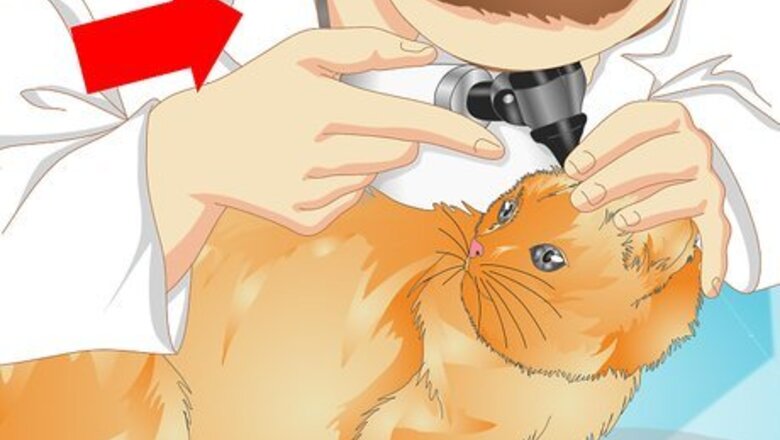
views
Getting Ready to Administer the Medicine
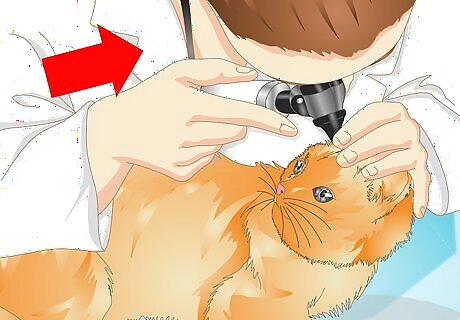
Take your cat to the vet. Before you place anything in your cat’s ear, you should take your cat to see a veterinarian for a diagnosis and examination to make sure it is safe to deliver medication to the ear. An infected ear can have painful and inflamed tissues along with a damaged eardrum. Damage to the inner ear can drive the infection deep into the ear and lead to dangerous problems with balance, pain, loss of appetite and head tilting. If the eardrum is ruptured or damaged, medication can drain into the inner ear and damage the inner ear structures.

Know the proper dose of medication. Before restraining your cat and beginning the process of administering the medication, make sure you read the directions for the medicine. Know the proper dosage of medication to be given prior to starting. Trying to figure out that information after restraining your cat can cause unneeded difficulties.
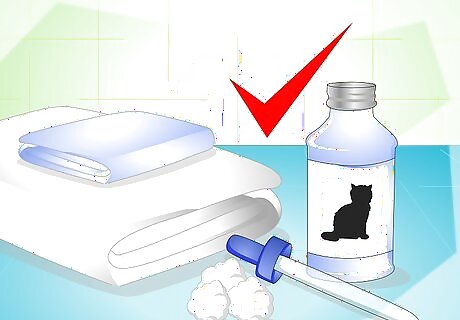
Gather the supplies. First, make sure you have everything you need before you start. The following items should be close at hand: Medication. Open it but leave cap on loosely to prevent contamination. A few cotton balls A hand towel A large bath-sized towel
Restraining Your Cat
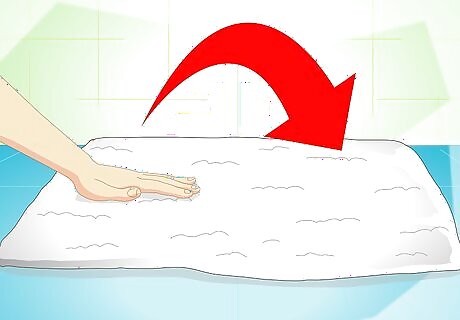
Prepare the towel. You need to wrap your cat in a towel. This ensures that neither you nor the cat is injured. Place the towel down on a table lengthwise across the table. Make sure the towel is large, like a bath towel. It needs to fit around the cat completely.
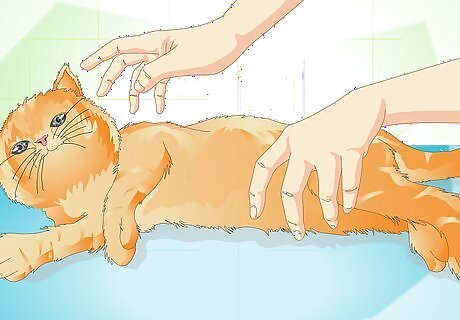
Approach your cat calmly. Make sure when you approach your cat, you do it calmly and slowly. You do not want to upset your cat. When you pick up your cat, pet him and talk to him in a quiet voice.
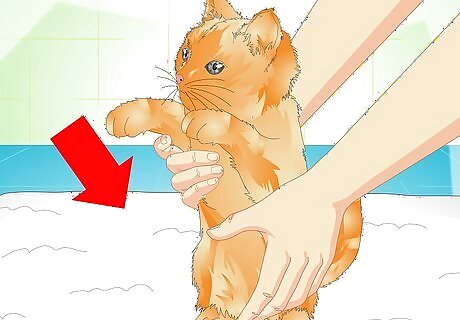
Place the cat on the towel. Lift your cat calmly. Make sure you do not cause your cat to be nervous or upset before wrapping him in the towel. Carefully place the cat on the towel about two-thirds from one side. The head should be facing away from you, the tail towards you. This position should make it so you can wrap the shorter end around the cat, then the longer end.
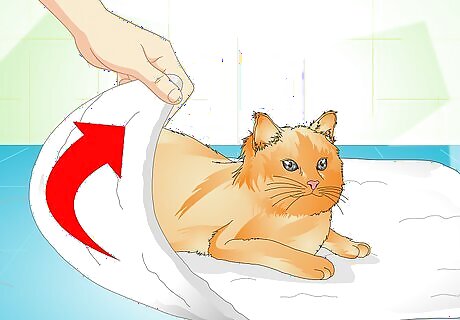
Wrap one end of the towel around the cat. Take the shorter end of the towel and wrap it snugly around the cat. Tuck the end underneath the cat’s body, leaving only the head exposed. Make sure you wrap the legs in the towel. If you cat starts hissing or struggling, bring the cat and the towel up so you can cradle him against your chest. Start petting the cat and reassuring him. Gently stroke his chin, head, and neck.
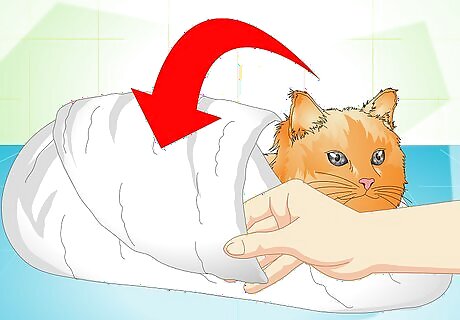
Wrap the longer end of the towel around the cat. Take the longer end of the towel and wrap it around the cat snugly. This end of the towel should wrap all the way around the cat, underneath him and then around the top again. The cat should be tightly wrapped in the towel, like a burrito, leaving only the tail and the head exposed. You should be able to hold the loose end of the towel to keep the towel closed. If the cat is still struggling, wrap him as best you can in the towel. The important thing is to make sure the cat's claws are covered so you don't get scratched.
Administering the Medication
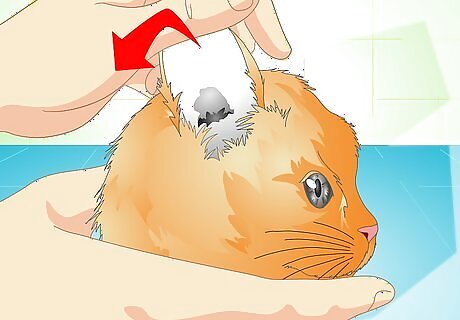
Fold the ear flap back. Hold your cat in your lap with the head facing away from you. Hold the cat’s head with one hand, and use the arm to keep the cat wrapped in the bath towel. Using the thumb of that hand, gently fold back the cat’s ear so the ear canal is easily accessible.
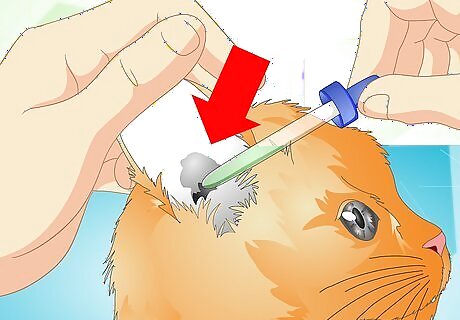
Place the medication in the cat’s ear. Gently tilt the cat’s head to the side, and place the medication in your other hand. Holding both the ear flap and the cat’s head in place, gently place the appropriate amount of medication in the ear or ears. Make sure not to let the loose end go so the cat doesn’t get out of the towel burrito.
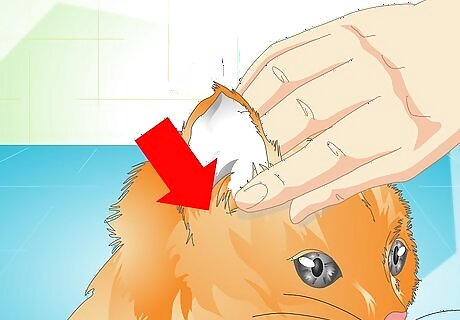
Gently massage the ear base. After placing the drops in the ear, gently massage the base of the ear to help the ear drops move down the ear canal. Try rubbing in a gently, slow circular motion. If your cat has an infection, this may be painful, so remember to be gentle so as not to cause your cat any additional pain. Do not do this aggressively or you can rupture the eardrum.
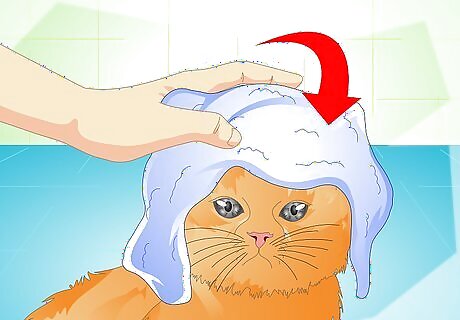
Place a small towel over the cat’s head. After administering the medication, quickly place a small hand towel over the cat’s head. You cat will shake his head, so this will keep the medication from splattering onto you or the table. Remove the hand towel when the cat is done shaking his ears.
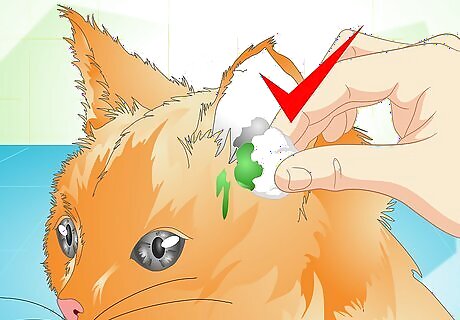
Wipe away any excess. Use a cotton ball to gently wipe any medication that has run out of the cat’s ear onto its fur. Then release the cat from the towel. Make sure to re-cap the medication and throw away any used cotton balls.




















Comments
0 comment